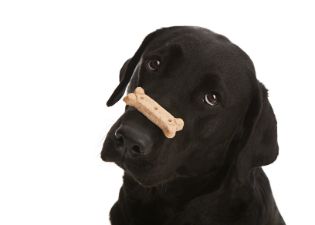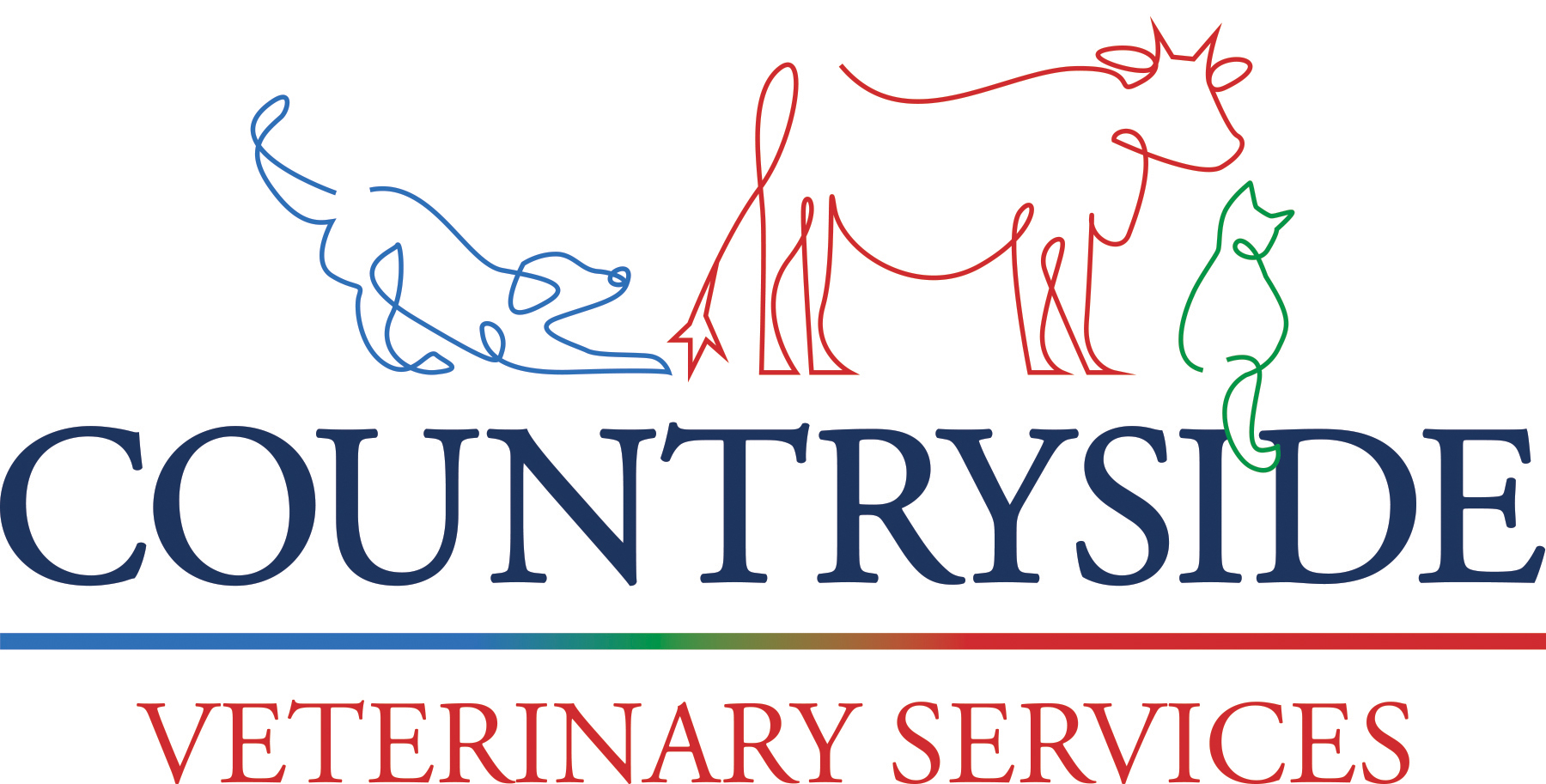
The Right Way to Give Your Dog a Treat
How to Give Your Dog a Treat
Whether you are using dog treats for training, encouraging good behavior, or just because you want to treat your dog to something special, everyone loves to give their dog a treat. Although giving your canine friend a treat is fun and rewarding for both you and him, as a pet owner, keep in mind that there are right and wrong ways to give your special companion a treat. Read our article here for information on how to give your dog a treat – the right way.
Right & Wrong Ways to Give Your Dog a Treat

The Wrong Way
One of the most common ways of giving a dog a treat is by holding it way high up in the air.
Giving treats using this method encourages your dog to stand on his back legs or jump in order to get it. While this may be fun and entertaining, there could be some negative consequences that come with it. There is a chance that when trying to jump and grab the treat out of your hand the dog may accidentally nip your finger. Although this may alarm you, this doesn’t happen on purpose. Nevertheless, a dog nip or bite can be painful and may cause bleeding, and in serious cases, stitching. If you give treats this way, you should reconsider how you give your dog a treat because dogs have less control and vision of their teeth when they are jumping to grab a treat.
In addition, another negative to this approach is that you may be inadvertently training your dog that behaviors such as jumping are good – in every situation. Keep in mind that encouraging her to jump for a treat may make it harder to control your dog from jumping in other scenarios – like greeting people.
For personal safety and for best behavior, learn more about how to train your dog not to bite.
The Right Way
The best way to give your dog a treat is to hold the treat at the dog’s eye level, where he or she doesn’t have to jump or snap to get it.
Bring the treat close to your dog’s face. If you still have problems with your dog accidentally nipping your finger after doing this, try offering the treat with a flat, open hand and offer it at their chest level. This will keep your fingers away from the treat and prevent accidental nipping.
If you toss your canine friend a treat instead of offering it at chest level, be sure to toss it gently on the floor/ground in front of them. To minimize jumping behavior, don’t toss in the air!
To encourage your canine to take treats from you gently, first try offering the treat with a closed fist. Once he or she has started to settle down and gently touches their nose to your fist (stops pawing or nipping to get the treat), then you may open your hand. Every time you give them a treat, repeat this sequence so they understand you expect calm behavior in exchange for a reward. To prevent injury to your hand, especially if you have sensitive/thin skin, you may try offering your dog treats wearing a garden glove.
Tips for Using Treats for Dog Training
1. Don’t wait too long to begin training! The moment your dog comes home with you, you will need to begin training him using treats as a reward. Do not wait until he gets older and begins developing bad habits. With young puppies, begin house training and basic commands using treats as soon as possible. As he matures and as you build trust and a connection with your puppy, you will be able to try dog tricks and advanced training.
2. Be sure to train her enough! Dog training using treats is an activity you will need to do routinely – at least two to three times a week. Inconsistent training will confuse your dog. Also, if your dog “sort of” obeys your command, such as only partially lying down when you say “Lie Down” or “Down,” do not reward her. Only reward her when she is fully lying down on the floor. Maintaining consistency will encourage her mastery of basic commands, prepare her for more advanced ones, and will ultimately help you and her build a bond of friendship and trust. You will want to revisit the old basics, but be sure to teach her new ones too!
3. Use small treats to train your puppy or young dog. A lot of patience is required on the part of the owner to properly train your puppy, young dog, or even adult dog. We recommend using small, aromatic treats for dog training. Since dog training sessions involve repetition, try breaking up the treats into ten to twenty pieces. Breaking up larger treats into small pieces will allow for plenty of attempts to help you train your puppy or dog. Soft treats will encourage your puppy to eat them quickly and be prepared for the next round.
4. Be sure to teach your dog common words. For example, when teaching them to “Sit,” show her the treat, and physically demonstrate the position. Once the puppy understand what “Sit” is and correctly performs the action, be sure to give the treat within a second or two so she recognizes the connection between “Sit” and the treat. Keep the common words short and sweet and use consistent words and tone of voice for quickest learning. Twenty common words include: “Sit,” “Down,” “Stay,” “Watch Me,” “Wait,” “Come,” “Off,” “Drop It,” “Leave It,” “No,” “Heel,” “Handle Your Business” (or “Go Potty”, “Outside”), “Take It,” “Bed,” “Leash,” “Lap,” “Speak,” “Quiet,” “Shake,” and “Car.”
5. Take into account the breed you have adopted. Don’t take a “one-size-fits-all” approach! Dog training can be unique depending on the breed, age, personality, and gender of puppy you have brought home. Additionally, no two dogs are exactly alike. Don’t just assume since you’ve read a book or that you have spoken with a friend that that information or advice is all you need. While there are many training styles available, you will need to take advice from multiple sources and customize a plan that works for the personality and breed of puppy. Also, keep in mind that some breeds are more stubborn than others!
6. Don’t just be a treat vending machine! Ensure you have several different types of treats on hand so that they don’t lose interest and get bored with the training process. Also, give your puppy verbal praise and a pat on the head when they obey you.
Behavior Factors
There is also a behavior factor that comes into play when giving your dog treats. When you give your dog a treat, you are rewarding her for whatever she was doing before the treat was given. For example, if you tell your dog to fetch and she brings the stick back to you, giving her a treat will teach her that retrieving the stick means getting a treat.
On the flip side, don’t give your dog a treat just to distract him from doing something. Giving your dog a treat when he is pawing at you or barking will just teach your dog that those actions mean reward and your dog will continue to do that more and more. Instead, only reward your dog when they deserve it and when they are showing good behavior. This will further encourage better behavior.
What Types of Dog Treats Should I Get For My Dog?
You will want to search for dog treats with nutritional or dental benefits. Always consult your veterinarian when making changes to your dog or puppy’s diet or treat choice! As you shop, go with your veterinarian’s recommendations. Check the labels and opt for the ones with added nutrients and dental benefits.
Hard chew treats will help to lessen tartar buildup and subsequent oral disease. For dogs who love chewing, you can purchase knotted rawhides or pork hide treats (to prevent your canine from chewing your belongings). To prevent weight gain, you can try feeding them healthy veggie options like carrots, broccoli, and green beans (possibly with a bit of peanut butter)!
How Many Dog Treats Should You Give Your Dog?
How many dog treats should I give my dog? This is a common question. We recommend giving him treats in multiple smaller pieces. This will usually work better when teaching your dog, rather than just giving your dog one large treat. This way, you are able reward your dog multiple times before you have to stop giving him treats. Please note that rewarding your dog with too many treats could put him at risk for obesity and stomach upset.
The amount of dog treats will depend on the size, health, age, etc. of your dog. Be sure to consult your veterinarian with clarification, or for any questions or concerns. In general, you will want to limit your dog’s treats to approximately 10% of their daily calories.
How Often Should I Give My Dog Treats?
How often should I be giving my dog treats? This is another common question that dog owners have. People also often wonder how often they should reward their dog and how big of a treat to give their dog when rewarding him. Ultimately, this will largely depend on your dog’s breed, the size, age, etc. As a general rule of thumb, you will want to limit their treats to approximately 10% of their daily calories.
Some pet owners opt for about a handful of kibble (about 20 to 30 pieces). Others offer their canine friend one biscuit. To help prevent obesity, diabetes, high blood pressure, or orthopedic problems, be sure to limit their treats!
How to Give Your Dog a Treat: In Summary
Rewarding your dog can be fun for both yourself and your beloved canine. Just make sure that when you are giving your dog a treat, you are doing it the right way that is safe for both him and you. Always discourage jumping and minimize accidental injury from nips and bites by offering their treats at chest level.
Think about the dog’s behavior before giving her a treat and think about ways you can change your tactics in order to better teach your dog. Dog training using treats requires much patience, however, the reward is great, as it will significantly encourage mental stimulation and build trust between you and your canine friend.
